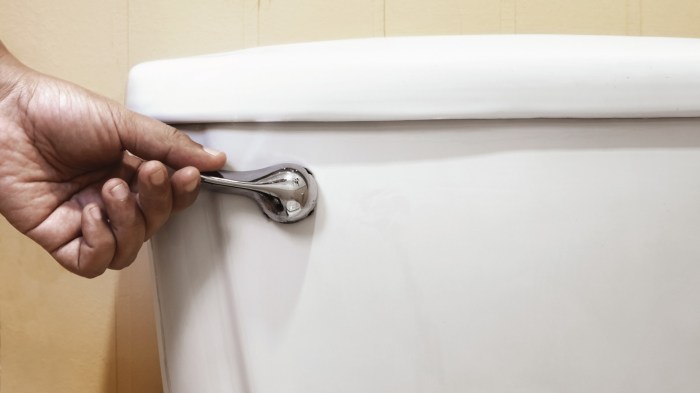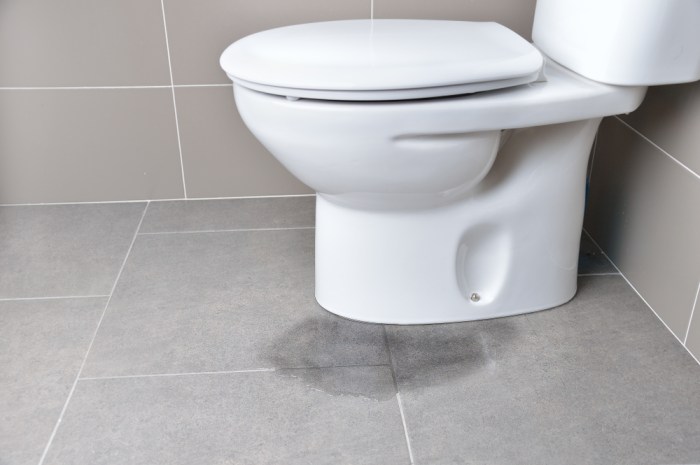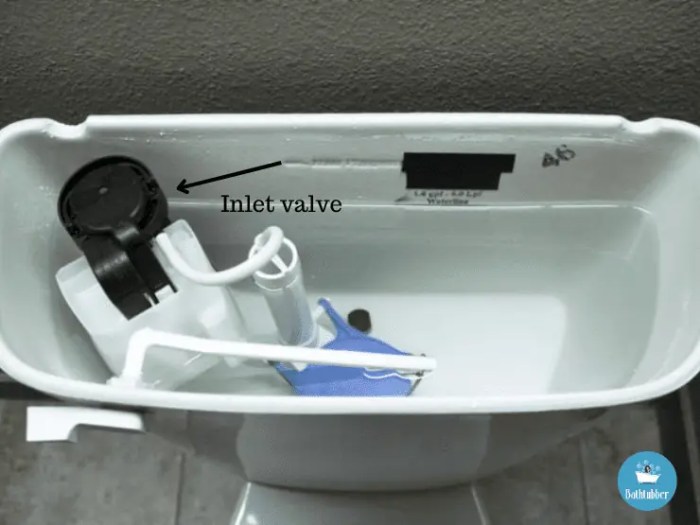Home Leak and Drain Solutions A Comprehensive Guide
Home leak and drain solutions are essential for maintaining a healthy and functioning home. This guide covers everything from identifying the source of a leak to performing DIY repairs and knowing when to call a professional. Whether it’s a dripping faucet or a major water main break, we’ll equip you with the knowledge and tools to tackle these common household issues.
We’ll explore common causes of leaks and drain clogs, from plumbing issues to roofing problems. Detailed troubleshooting steps and DIY repair techniques will empower you to handle many situations yourself. However, we’ll also highlight when professional help is necessary, ensuring your safety and preventing further damage.
Identifying Common Home Leaks
Home leaks can range from minor inconveniences to costly disasters. Understanding the signs and sources of leaks is crucial for timely repair and preventing further damage. Prompt action minimizes water damage, mold growth, and structural issues.
Plumbing Leaks
Plumbing leaks are a common occurrence in homes, often stemming from aging pipes or faulty fixtures. These leaks can range from a slow drip to a sudden gush, impacting the home’s structural integrity and utility bills.
- Faulty faucets: Leaking faucets are a prevalent plumbing issue. A dripping faucet, while seemingly minor, can waste significant water over time. A dripping sound is the most common symptom, often accompanied by water accumulating on the floor around the fixture. Water damage to the surrounding area may also occur.
- Clogged drains: Clogged drains can lead to water backing up and potentially leaking into the surrounding walls or floors. Slow draining, gurgling sounds, and standing water are indicative symptoms. Identifying the root cause of the blockage is essential for effective repair.
- Damaged pipes: Damaged pipes, often caused by corrosion, wear and tear, or impacts, can result in leaks. Water stains, discoloration, and unusual moisture are often the visual clues. A persistent dripping sound or a sudden gush of water may be heard.
- Water heater issues: Water heaters can leak if the tank is damaged or the connections are faulty. Water accumulation near the water heater and a persistent dripping sound are common symptoms. A buildup of rust around the water heater is also a telltale sign of potential issues.
Roofing Leaks
Roofing leaks are another common cause of water damage in homes. Leaks often originate from damaged shingles, worn flashing, or improper installation.
- Damaged shingles: Cracked or missing shingles can allow water to penetrate the roof. Water stains on the ceiling, walls, or attic are telltale signs. A damp spot on the roof or a persistent dripping sound can also indicate a leak.
- Flashing issues: Improperly installed or damaged flashing can create gaps that allow water to seep into the home. Leaks in the areas around chimneys, skylights, and vents are common. Water stains or discoloration around these areas are possible signs.
- Holes or cracks in the roof: Physical damage, like holes or cracks, in the roof can allow water to penetrate. Water stains on the ceiling and walls are indicative symptoms. A persistent dripping or a sudden gush of water may also be noticed.
Other Leaks, Home leak and drain solutions
Other sources of leaks can be less obvious, but equally damaging.
- Water supply lines: Leaking water supply lines are often concealed within walls. Unusual moisture around pipes, or an unexplained increase in water bills, can signal a potential leak. A dripping sound or a slow, steady water flow are common symptoms.
- Condensation: While not technically a leak, excessive condensation can lead to water damage. Moisture buildup on walls or windows, or a musty odor, can be signs. Improper insulation or inadequate ventilation are often the cause.
Leak Comparison
| Leak Type | Cause | Symptoms |
|---|---|---|
| Dripping Faucet | Faulty faucet parts, worn-out washers | Slow, steady drip; water accumulation around fixture |
| Major Water Main Break | Damage to water main pipe | Sudden, forceful water flow; significant water accumulation; potential damage to pavement or landscaping |
| Roof Leak | Damaged shingles, missing flashing | Water stains on ceilings/walls; damp spots on attic/roof |
| Pipe Leak | Corrosion, cracks, or breaks in pipes | Water stains/discoloration; unusual moisture; unusual increase in water bill |
Understanding Drain Issues
Drain clogs are a common household problem, often causing frustrating backups and unpleasant odors. Identifying the source of the blockage and implementing the appropriate solution can save time and money. Understanding the different types of drain issues and their potential causes is crucial for effective troubleshooting.
Common Drain Problems
A variety of issues can affect your drains, from slow drainage to complete blockages. These problems often stem from a buildup of debris and waste. Understanding these problems is the first step toward resolving them.
- Slow Drains: Water drains much more slowly than usual, often with a noticeable gurgling sound. This is frequently caused by partial blockages, restricting the flow.
- Complete Blockages: Water stops draining completely, leading to backups and potential overflow. Full blockages are often a result of significant obstructions.
- Gurgling Sounds: A gurgling noise emanating from the drain indicates a potential problem with the plumbing system, possibly due to a blockage or a loose connection.
- Unpleasant Odors: A foul smell coming from the drain is a strong indicator of a blockage, often allowing sewer gases to escape.
Causes of Clogged Drains
Several factors can contribute to drain blockages. Understanding these causes can help prevent future problems.
- Grease Buildup: Grease and oil from cooking can solidify and adhere to drain pipes, forming a layer that restricts water flow. Regular cleaning and disposal of grease are crucial in preventing this issue.
- Hair and Debris: Hair, food particles, and other small debris can accumulate in drains, creating a blockage. Regular maintenance, like using drain covers, can help prevent this problem.
- Foreign Objects: Items like toys, sanitary napkins, or other foreign objects can become lodged in the pipes, causing clogs.
- Root Intrusion: Tree roots can penetrate drain pipes, causing blockages and potentially damaging the pipes over time. This is particularly prevalent in older systems or those in areas with dense tree cover.
Troubleshooting Slow Drains
Troubleshooting slow drains involves a methodical approach, starting with simple solutions before moving to more involved procedures. Careful inspection and identification of the cause are critical to resolving the issue.
- Check for Obstructions: Visually inspect the drain opening for any obvious obstructions, like hair or food particles. Remove any visible debris.
- Use a Plunger: A plunger can help dislodge blockages in sinks and tubs. Ensure the plunger creates a good seal against the drain opening to maximize its effectiveness.
- Utilize a Drain Snake: A drain snake, also known as a plumbing auger, can reach deeper into the drainpipe to remove clogs. This is particularly useful for stubborn blockages that a plunger cannot address.
Unclogging a Kitchen Sink Drain: A Step-by-Step Guide
A systematic approach to unclogging a kitchen sink drain is essential for effective problem-solving. Follow these steps to clear the blockage.
- Assess the Situation: Check for visible debris and determine the severity of the blockage.
- Use a Plunger: Create a tight seal around the drain opening with the plunger and plunge vigorously several times. Repeat if necessary.
- Employ a Drain Snake: If the plunger is ineffective, carefully insert the drain snake into the drain opening and rotate it to dislodge the clog.
- Inspect the Drain: Check the drain for any remaining debris and address any visible issues.
- Run Hot Water: Run hot water down the drain to flush out any remaining particles.
Drain Issues Table
This table summarizes common drain issues, potential causes, and suggested solutions.
| Drain Issue | Potential Cause | Solutions |
|---|---|---|
| Slow Drainage | Grease buildup, hair, debris, foreign objects | Plunger, drain snake, hot water, cleaning |
| Complete Blockage | Significant buildup of grease, hair, debris, or foreign objects | Drain snake, chemical drain cleaner (use cautiously), professional plumber |
| Gurgling Sounds | Partial blockage, loose connections | Plunger, drain snake, checking for loose pipes |
| Unpleasant Odors | Blockage allowing sewer gases to escape | Plunger, drain snake, professional plumber |
DIY Leak and Drain Solutions
Taking on minor plumbing repairs yourself can save you money and stress. This section provides practical, step-by-step guides for common DIY leak and drain fixes. Remember, safety is paramount. Always turn off the water supply before working on any plumbing system.
Many simple leaks and clogs can be addressed with basic tools and materials, preventing the need for costly professional interventions. By understanding the underlying causes and applying the right techniques, you can tackle these issues with confidence.
Basic Tools and Materials for DIY Leak Repair
A well-equipped toolbox is essential for tackling DIY plumbing repairs. Essential tools include adjustable wrenches, channel-lock pliers, pipe wrenches, screwdrivers (flathead and Phillips), a basin wrench, a pipe cutter (for cutting pipes), a pipe sealant, Teflon tape, plumber’s putty, and various types of pipe clamps. Additional materials like caulk, silicone sealant, and various types of gaskets are also handy. Having the right tools ensures efficient and safe repairs.
Locating a Leaky Pipe Under a Sink
Pinpointing the source of a leak under a sink requires patience and attention to detail. Start by isolating the area where the leak is suspected. Inspect the pipes for any signs of dampness, discoloration, or unusual noises. A moisture meter can be used to pinpoint water presence. A thorough examination of the pipes is crucial to determine the precise location of the leak.
Fixing a Dripping Faucet
A dripping faucet not only wastes water but can also lead to increased water bills. The most common cause of a dripping faucet is a worn-out washer or a faulty faucet valve. To fix it, shut off the water supply, remove the handle, and replace the washer. Ensure that the new washer is properly seated in the faucet. Replace the handle and turn the water supply back on. Verify that the dripping has stopped.
Unclogging a Shower Drain
Shower drains can become clogged with hair, soap scum, and other debris. A simple plunger or drain snake can often clear a minor clog. If the clog persists, a chemical drain cleaner can be used. Carefully follow the instructions on the product label and ensure adequate ventilation. If the clog is stubborn, it may require professional intervention.
Patching a Small Hole in a Pipe
A small hole in a pipe can be fixed with a simple patch. First, locate the leak and shut off the water supply. Cut a patch of pipe repair material slightly larger than the hole. Apply a pipe sealant to the patch and the surrounding area. Press the patch firmly against the hole and secure it with clamps or straps. Open the water supply slowly to test for leaks.
Common DIY Leak and Drain Fixes
| Fix | Tools Needed | Procedure |
|---|---|---|
| Fixing a dripping faucet | Adjustable wrench, screwdriver, new faucet washer, Teflon tape | Turn off water supply, remove handle, replace washer, reassemble, turn water back on. |
| Unclogging a shower drain | Plunger, drain snake, or chemical drain cleaner | Use plunger or drain snake to clear clog; if needed, use chemical drain cleaner following product instructions. |
| Patching a small pipe hole | Pipe repair patch, pipe sealant, clamps/straps | Shut off water, cut patch, apply sealant, press patch firmly, secure with clamps, test for leaks. |
Professional Leak and Drain Repair
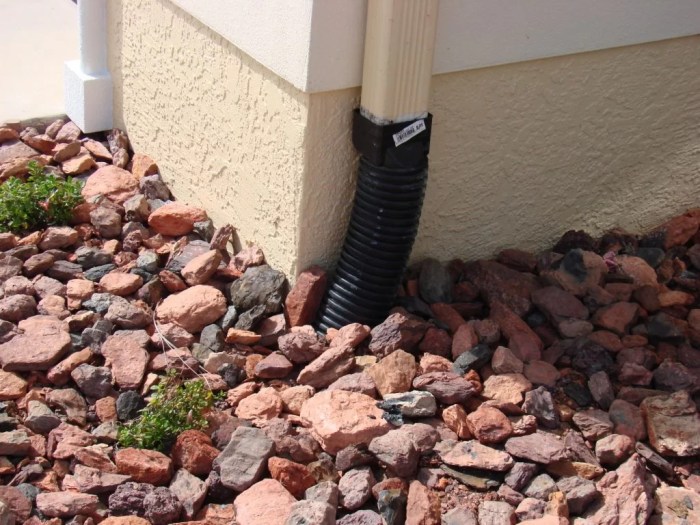
Source: randrsprinkler.com
Sometimes, home plumbing issues require expertise beyond DIY solutions. Understanding when to call a professional is crucial for preventing further damage and ensuring a safe and efficient repair. This section details the situations where professional help is necessary and guides you through the process of finding and working with a qualified plumber.
Identifying Situations Requiring Professional Help
Professional intervention is often necessary when DIY repairs prove insufficient or pose safety risks. Complex plumbing systems, particularly those involving concealed pipes or intricate fixtures, can be challenging to access and troubleshoot effectively without specialized tools and experience. Furthermore, certain types of leaks, such as those originating from under a slab or within a wall cavity, are nearly impossible to address without the use of specialized equipment.
When a Leak is Too Extensive for DIY Repair
Leaks exceeding a certain scale or exhibiting specific characteristics should be addressed by professionals. A significant water flow or persistent dripping, especially if accompanied by visible water damage, usually indicates a more extensive issue that demands professional expertise. For instance, if water is pooling in a basement or if the leak has caused structural damage, a professional assessment and repair are essential to prevent further damage and ensure proper remediation.
Questions to Ask a Plumber
Prior to hiring a plumber, it’s crucial to ask specific questions to assess their expertise and professionalism. Key inquiries include their experience with similar plumbing problems, their pricing structure, and whether they offer warranties on their services. Confirming their licensing and insurance status is also important. Asking about their process for handling emergencies, their preferred payment methods, and obtaining references from previous clients are all essential steps in choosing a reputable plumber.
Importance of Hiring Licensed and Insured Plumbers
Licensed and insured plumbers are equipped to handle a wide range of plumbing issues. They possess the necessary training and certifications to perform repairs safely and effectively. Furthermore, their insurance protects both the homeowner and the plumber in case of accidents or damages during the repair process. Choosing an unlicensed plumber exposes you to risks of substandard work, potential safety hazards, and financial liability if something goes wrong.
Scheduling a Plumbing Service Call
Scheduling a plumbing service call involves communicating clearly with the plumbing service about the nature of the issue. Providing specific details about the location, type, and severity of the leak or drain problem ensures the plumber arrives prepared and ready to address the issue efficiently. Confirming appointment times and outlining any specific requirements or concerns, such as working around a tight schedule, helps facilitate a smooth and effective service call.
Finding a Reputable Plumbing Service
Finding a reputable plumbing service involves researching local plumbers, reading online reviews, and asking for recommendations from trusted sources. Checking online reviews and testimonials from previous customers provides insights into the quality of service offered by different plumbers. Investigating the plumbing service’s reputation and past performance is crucial for making an informed decision.
Table of Reasons for Professional Help, Warning Signs, and Contact Information
| Reason for Professional Help | Warning Signs | Contact Information |
|---|---|---|
| Leaks originating from hidden areas (e.g., under slabs, within walls) | Persistent dripping, water pooling, visible water damage | [List of reputable plumbing services with contact info] |
| Extensive water damage | Significant water flow, structural damage, mold growth | [List of reputable plumbing services with contact info] |
| Complex plumbing systems | Uncertain diagnosis, lack of clear solution, extensive repair needs | [List of reputable plumbing services with contact info] |
Preventing Future Leaks and Drain Issues: Home Leak And Drain Solutions
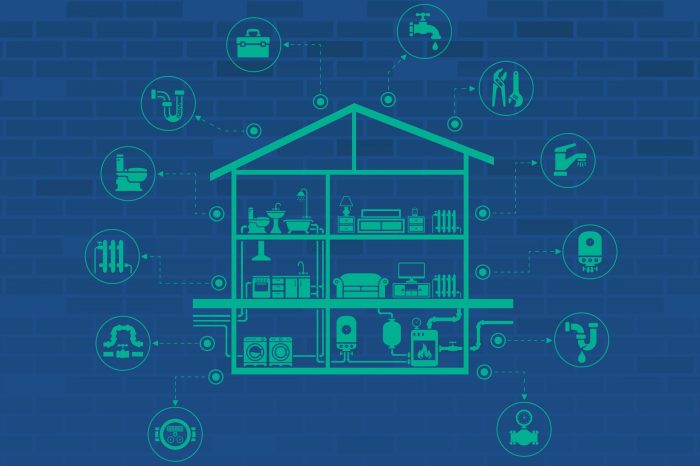
Source: txfb-ins.com
Proactive measures are crucial in maintaining a healthy plumbing system. By understanding potential problem areas and implementing preventive strategies, homeowners can significantly reduce the risk of costly repairs and disruptions. Regular maintenance is key to ensuring your plumbing system functions efficiently and reliably for years to come.
Effective prevention hinges on a combination of understanding potential problem areas, performing regular maintenance, and addressing potential vulnerabilities. Proper maintenance and preventative measures will contribute to avoiding costly plumbing repairs.
Regular Maintenance
Regular plumbing maintenance is essential for identifying and addressing minor issues before they escalate into major problems. This proactive approach not only saves money but also extends the lifespan of your plumbing system. Inspections and upkeep are key to long-term system health.
- Inspect pipes and fixtures regularly. Look for signs of leaks, corrosion, or damage. This includes checking for dripping faucets, loose connections, and unusual noises. Addressing these issues early can prevent larger problems.
- Check valves and pressure-relief systems regularly. Malfunctioning valves can lead to pressure surges and damage. Pressure relief systems are essential for preventing pipe bursts.
- Clear out debris from drains regularly. This helps prevent clogs and ensures proper drainage. Removing hair, food particles, and other debris prevents blockages.
- Clean and descale water heaters and boilers periodically. This ensures proper water heating and reduces the risk of corrosion and scale buildup.
Protecting Pipes from Freezing
Freezing temperatures can cause significant damage to pipes, leading to leaks and costly repairs. Protecting your pipes during cold weather is a critical preventative measure.
- Insulate exposed pipes, especially those located in unheated areas like attics or basements. Insulation prevents pipes from losing heat, reducing the risk of freezing.
- Wrap pipes with insulation blankets or foam sleeves. This provides an additional layer of protection against cold temperatures. Insulation materials such as fiberglass or closed-cell foam are commonly used.
- Open cabinet doors and drawers over pipes to allow warmer air to circulate. This helps to keep pipes from getting too cold.
- Insulate pipes passing through exterior walls. Pipes passing through exterior walls are particularly vulnerable to freezing. Consider using exterior pipe insulation or thermal wrapping.
- Maintain adequate heat in your home. A consistently warm home temperature helps to prevent pipes from freezing. Set your thermostat to a comfortable level, especially during periods of extreme cold.
Maintaining Proper Water Pressure
Maintaining proper water pressure is crucial for efficient water use and prevents potential leaks.
- Check water pressure regularly. Use a pressure gauge to ensure the pressure is within the recommended range for your plumbing system. A fluctuating or consistently low pressure could indicate a problem.
- Inspect and clean the water filter regularly to ensure proper flow. A clogged water filter can restrict water flow, leading to low pressure.
- Adjust water pressure settings if necessary. Homeowners may be able to adjust water pressure with a valve located at the water meter or main shutoff. This allows for adjusting the pressure to the appropriate level for the plumbing system.
Preventing Drain Clogs
Preventing drain clogs is essential for maintaining proper drainage and avoiding backups.
- Install drain strainers. Strainers in sinks and tubs can catch hair, food particles, and other debris, preventing them from entering the drainpipe.
- Use drain cleaners sparingly. Overuse can damage pipes and create other issues. Consider using natural drain cleaning solutions if possible.
- Avoid pouring grease, oil, or other fats down the drain. These substances solidify and can cause clogs.
- Report unusual drainage issues to a plumber or drain technician promptly. Addressing problems quickly prevents serious clogs and backups.
Home Plumbing Maintenance Checklist
A regular checklist helps keep your plumbing system in good working order.
| Task | Frequency | Description |
|---|---|---|
| Inspect pipes for leaks | Monthly | Visually inspect pipes for drips, stains, or unusual noises. |
| Check valves and pressure-relief systems | Quarterly | Inspect for proper function and leaks. |
| Clear drains | Weekly | Remove hair, food particles, and other debris. |
| Insulate exposed pipes | Before freezing temperatures | Protect pipes from freezing temperatures by insulating them. |
| Check water pressure | Quarterly | Ensure proper water pressure using a pressure gauge. |
| Clean water heater | Annually | Clean and descale the water heater to prevent scale buildup. |
Illustrative Examples of Home Leaks and Drains
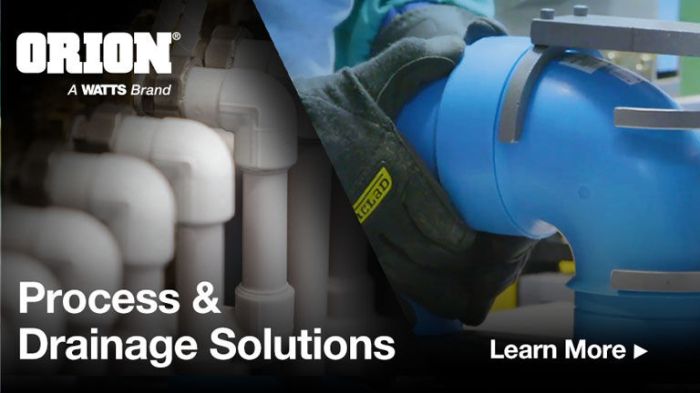
Source: watts.com
Home leaks and drain issues can range from minor annoyances to significant structural problems. Understanding the various scenarios helps in identifying the problem and implementing appropriate solutions. Proper identification is crucial for efficient and effective repair.
Leaky Roof Causing Water Damage
A leaky roof can manifest in various ways, leading to a range of problems. Water seeping through a damaged section of the roof can lead to water pooling on ceilings, walls, and floors. This pooling can cause significant damage to drywall, insulation, and wooden structures. Mold and mildew growth can also be a serious consequence, impacting indoor air quality and potentially requiring professional remediation. Early detection is key, as prolonged exposure to moisture can result in substantial property damage.
Clogged Bathtub Drain
A clogged bathtub drain often results from a buildup of hair, soap scum, and other debris. This blockage restricts water flow, leading to water accumulating in the tub and making it difficult to drain completely. The affected area can be the drain itself, the piping, or a combination of both. Over time, this can lead to unpleasant odors, and even damage to the plumbing system.
Broken Pipe in a Wall
A broken pipe within a wall presents a significant risk of water damage. Depending on the pipe’s location and the extent of the break, the damage can range from minor to severe. Water leakage can seep through the wall, causing damage to the drywall, insulation, and even the structural integrity of the house. In severe cases, the moisture can compromise the stability of the walls, leading to potential structural issues.
Fixing a Dripping Faucet
A dripping faucet, though seemingly minor, can waste significant amounts of water over time. It is essential to address this promptly. The cause is often a worn-out washer or a faulty valve. A dripping faucet can be fixed by replacing the washer or adjusting the valve. This is typically a straightforward DIY task. For visual assistance, imagine a faucet with a visible drip. The dripping sound is a clear indicator. To fix it, unscrew the faucet handle, remove the old washer, and install a new one. Tighten the handle securely.
Repairing a Leaky Pipe Under a Sink
A leaky pipe under a sink is another common plumbing issue. The leak can be caused by a variety of factors, including corrosion, cracks, or worn-out fittings. The initial sign is often a slow drip or a puddle of water accumulating under the sink. Addressing the leak early is essential to prevent further damage. To repair a leak, locate the source of the leak and carefully shut off the water supply to the affected pipe. Then, isolate the pipe section and use appropriate tools (e.g., pipe sealant, plumber’s tape) to seal the leak.
Burst Water Pipe
A burst water pipe can cause significant damage to a home. It often occurs due to freezing temperatures, especially in poorly insulated areas. Water pressure, aging pipes, or even improper installation can also contribute to a pipe bursting. A burst pipe can lead to substantial water damage to floors, walls, ceilings, and even the foundation. This necessitates immediate action to prevent further damage. The sound of a loud gushing water is often the first indication of a burst pipe. Prompt action is crucial to mitigate the extensive damage that can occur quickly.
Conclusive Thoughts

Source: thesentinellamalaga.com
In conclusion, this comprehensive guide provides a practical approach to home leak and drain solutions, offering a range of options from DIY fixes to professional interventions. By understanding the causes, symptoms, and solutions for various plumbing and drainage problems, you can maintain a healthy home environment. Remember, prevention is key, and regular maintenance can significantly reduce the likelihood of future issues.
